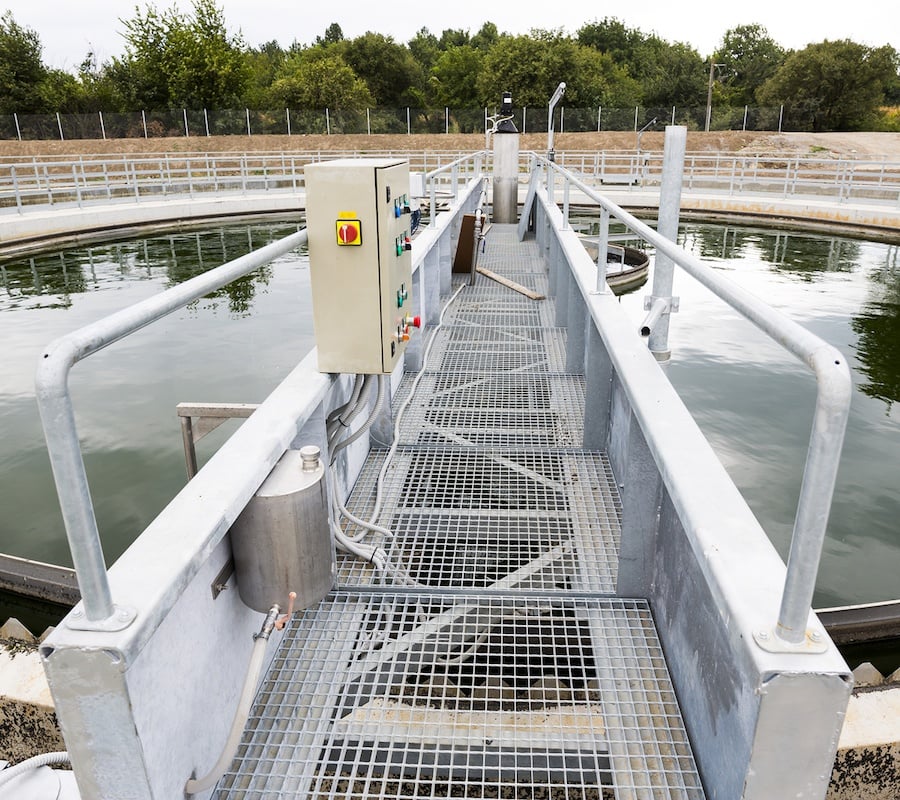Often times a wastewater treatment plant clarifier will need repair and retrofitting, especially in and around the weir trough.
Most clarifiers are manufactured out of steel, and over time the corrosive conditions at a wastewater treatment plant corrode and the adjustable weirs often disintegrate, making proper operation impossible. The most cost-effective method to rebuild and retrofit the clarifier weir is to utilize a fiberglass replacement. Depending on the extent of the damage, which could involve just replacing the weir plate or it could involve a more extensive process that requires replacing portions or all of the trough. If you are lucky enough to still have the original submittals or plans for the clarifier you will be able to obtain critical measurements and information from them. If not, you will need to obtain measurements from some portion of the existing clarifier weir and trough so that a new fiberglass replacement can be ordered.Carefully measure and record all dimensions of the weir plate and trough. Be sure to obtain the length of each V-notch, its depth, and the spacing between each V-notch. Clarification weir plates are calculated for specific flow and water velocity, so a high level of care should be taken to properly duplicate the original design, to not compromise the performance.





